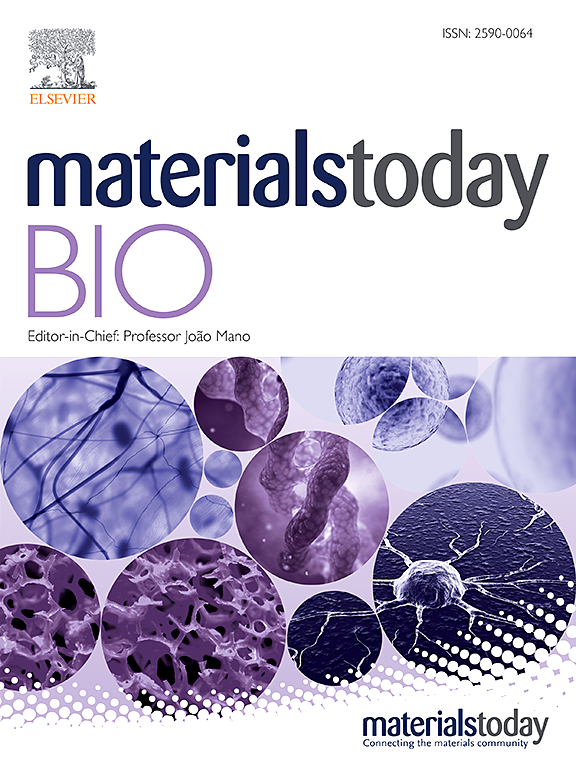Multifunctional biosynthesized magnetosome for multimodal imaging and combined therapy of tumor
IF 8.7
1区 医学
Q1 ENGINEERING, BIOMEDICAL
引用次数: 0
Abstract
The large recruitment of tumor-associated macrophages and low exposure of tumor-associated antigens in tumor microenvironment have severely suppress the efficacy of anti-tumor immunotherapy. Herein, biosynthesized magnetosome (Mag) from bacteria was loaded with photothermal/photodynamic agent/near infrared (NIR) fluorescence dye (IR780) and further modified with lipid-PEG-c(RGDyK) through biomembrane, forming IMagRGD for fluorescence imaging, magnetic resonance imaging, immunotherapy and photodynamic/photothermal therapy. After intravenous injection into B16F10 tumor-bearing mice, IMagRGD could efficiently accumulate in tumor tissues based on near infrared (NIR) fluorescence and magnetic resonance dual-modality imaging, and repolarize tumor-associated macrophages (TAMs) from M2 phenotype to M1 phenotype, significantly improving the effect of tumor immunotherapy. Moreover, photothermal and photodynamic effect of IR780 could kill tumor cells and elicit immunogenic cell death to mediate anti-tumor immunity, promoting dendritic cells (DCs) maturation and then activating specific effector T cells to further eliminate tumor cells. This study provides a new approach for reversing the activity of tumor immunosuppressive microenvironment and strengthening the efficiency of tumor photoimmunotherapy.

多功能生物合成磁小体用于肿瘤的多模态成像和联合治疗。
肿瘤相关巨噬细胞的大量募集和肿瘤微环境中肿瘤相关抗原的低暴露严重抑制了抗肿瘤免疫治疗的效果。本研究将细菌生物合成的磁小体(Mag)装载光热/光动力剂/近红外(NIR)荧光染料(IR780),再通过生物膜对脂质peg -c(RGDyK)进行修饰,形成IMagRGD,用于荧光成像、磁共振成像、免疫治疗和光动力/光热治疗。经静脉注射B16F10荷瘤小鼠后,根据近红外(NIR)荧光和磁共振双模态成像,IMagRGD能在肿瘤组织中高效积累,并使肿瘤相关巨噬细胞(tumor associated macrophages, ams)从M2表型再极化为M1表型,显著提高肿瘤免疫治疗效果。此外,IR780的光热和光动力作用可杀伤肿瘤细胞,诱导免疫原性细胞死亡,介导抗肿瘤免疫,促进树突状细胞成熟,进而激活特异性效应T细胞,进一步消灭肿瘤细胞。本研究为逆转肿瘤免疫抑制微环境活性,提高肿瘤光免疫治疗效率提供了新的途径。
本文章由计算机程序翻译,如有差异,请以英文原文为准。
求助全文
约1分钟内获得全文
求助全文
来源期刊

Materials Today Bio
Multiple-
CiteScore
8.30
自引率
4.90%
发文量
303
审稿时长
30 days
期刊介绍:
Materials Today Bio is a multidisciplinary journal that specializes in the intersection between biology and materials science, chemistry, physics, engineering, and medicine. It covers various aspects such as the design and assembly of new structures, their interaction with biological systems, functionalization, bioimaging, therapies, and diagnostics in healthcare. The journal aims to showcase the most significant advancements and discoveries in this field. As part of the Materials Today family, Materials Today Bio provides rigorous peer review, quick decision-making, and high visibility for authors. It is indexed in Scopus, PubMed Central, Emerging Sources, Citation Index (ESCI), and Directory of Open Access Journals (DOAJ).
 求助内容:
求助内容: 应助结果提醒方式:
应助结果提醒方式:


